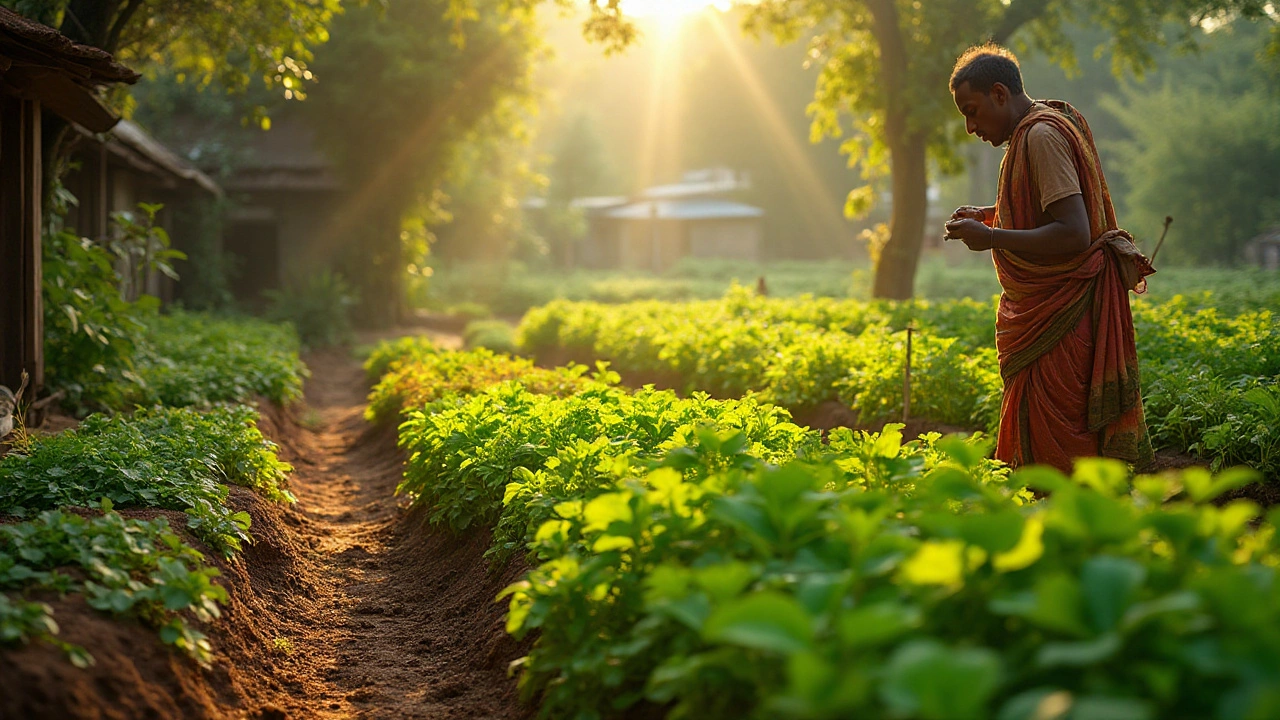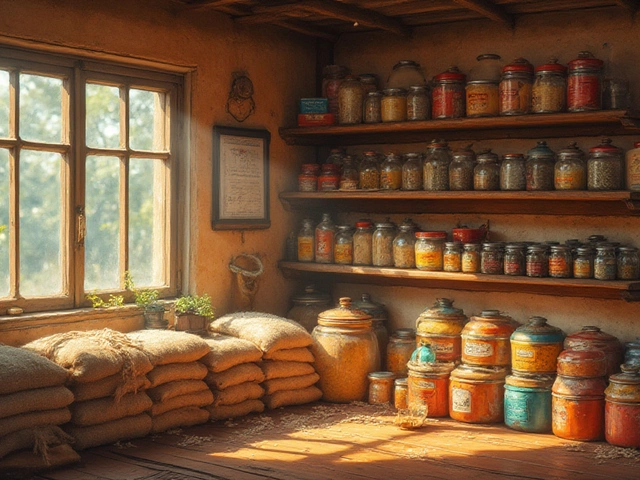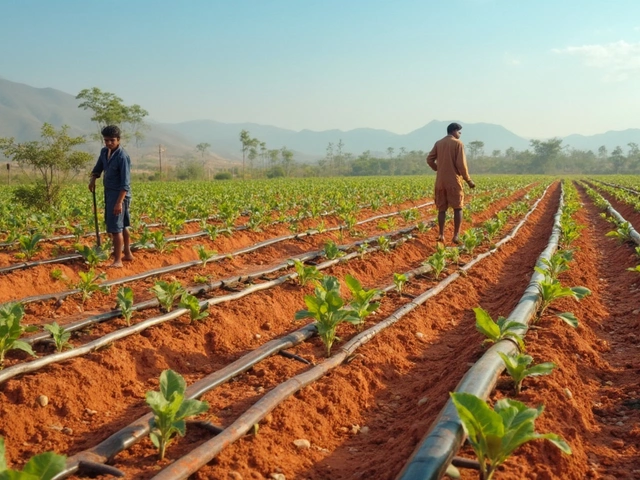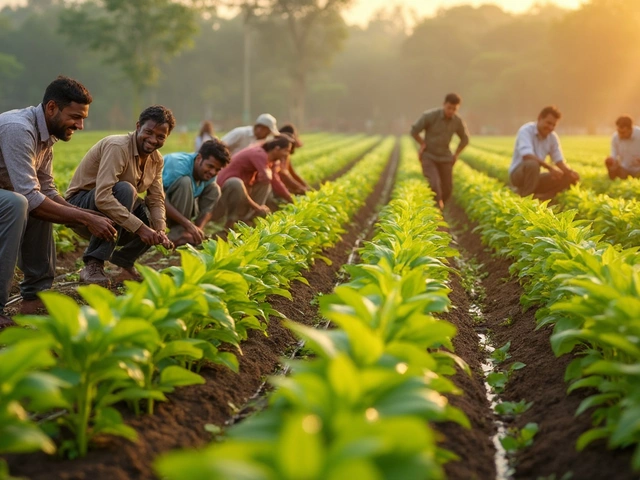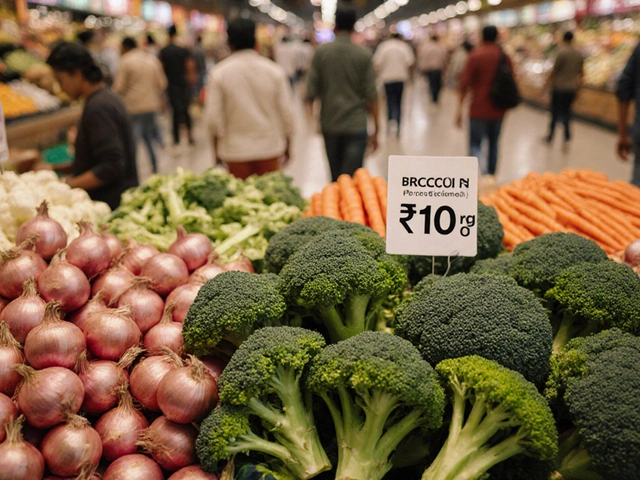Starting a kitchen garden is a delightful venture that brings the joy of fresh produce right to your doorstep. But before you dig in, finding the perfect spot is key to a flourishing garden.
The right location can make all the difference, as plants thrive in areas that meet their specific sunlight, soil, and water requirements. With a bit of planning and creativity, even the smallest spaces can turn into productive gardens.
Whether you're working with a sprawling backyard or a cozy balcony, the art of placing your garden effectively is all about observation and innovation. Here, we'll explore some essential tips to guide your journey in creating a verdant kitchen garden paradise.
- Understanding Sunlight and Shade
- Evaluating Soil Quality
- Considering Water Access
- Design and Accessibility
Understanding Sunlight and Shade
When embarking on your kitchen garden journey, one of the most crucial aspects to consider is how sunlight interacts with your chosen plot. Sunlight is the lifeblood of plants, driving the process of photosynthesis and fueling growth and vitality. While some might think that any sunny spot will do, understanding the nuances of sun exposure can greatly influence the success of your gardening endeavors. Generally, most edible plants, such as tomatoes, peppers, and basil, require at least 6 to 8 hours of direct sunlight each day. This ensures they receive enough energy to produce robust yields. However, not all plants bask in the full sun. Leafy greens like lettuce and spinach can thrive in partial shade, which often helps them avoid harsh afternoon sun that can make them bolt or turn bitter.
As you analyze your garden space, observe its sun pattern throughout the day and across different seasons. This involves noting where shadows fall during morning, midday, and late afternoon. It can be surprising how much shade a tree or structure can cast, altering a seemingly sunny area. A compass can be a handy tool here, helping you align your garden for optimal light. Similarly, knowing your region’s sun path can help buy or build shade covers or reflectors to enhance light availability effectively. According to an old gardening adage, "The best fertilizer is the shadow of the gardener," emphasizing the importance of paying close attention to your plants and their environments.
"The love of gardening is a seed once sown that never dies," said Gertrude Jekyll, capturing the active role a gardener plays in nurturing their green space.
Strategically placing your garden to maximize exposure isn’t just about battling shade; too much sun can also become detrimental. In excessively warm climates, providing some respite from intense midday rays can prevent scorching. Structures like pergolas or the clever use of tall plants to create shade can help protect more delicate varieties. Creating a diverse garden with plants that prefer varying light conditions might be the best approach to balance sun and shade. By planting taller and sun-loving varieties at the back and shorter, shade-tolerant ones upfront, you can design a layered garden that thrives harmoniously. Plant location is, therefore, a dynamic choice, requiring fine-tuning and adaptability.
Finally, consider how light changes through the year. Seasonal shifts can radically alter sunlight availability and intensity. During winter months, sunlight is often more limited. Placing reflective surfaces around your garden can amplify the available light, promoting healthier growth even during less sunny periods. For those with limited natural sun access, such as apartment dwellers, or those with heavily shaded yards, container gardening offers an invaluable alternative. Containers allow you to move plants to chase the sun or bring them indoors when necessary, expanding the possibilities for any space. Collectively, these practices not only highlight the importance of sunlight but also demonstrate the resourcefulness needed to turn a patch of land into a thriving kitchen garden. Keeping these aspects in balance ensures that you provide a nurturing environment, whatever the weather or climate, ensuring nature's bounty is at your fingertips year-round.

Evaluating Soil Quality
When it comes to cultivating a thriving kitchen garden, soil is your foundation. The quality of the soil directly influences the health, growth, and yield of your plants. To start, understanding the composition of your soil is essential. Most garden plants prefer a loamy soil, which is a balanced mix of sand, silt, and clay. This ideal composition provides adequate drainage and aeration while retaining moisture and nutrients, giving roots the perfect environment to grow robustly. Begin by digging a small hole in your prospective garden area, take a handful of soil, and inspect it closely. Feel its texture between your fingers and observe its structure. A loamy soil will feel soft and slightly gritty but not sticky.
Testing for pH levels is another important step. Most edible plants thrive in slightly acidic to neutral soil, with a pH range of 6.0 to 7.5. You can easily find pH testing kits at local garden centers or online, which provide a quick and accurate measurement of your soil's acidity or alkalinity. Knowing your soil pH helps you decide if amendments are needed. For instance, if your soil is too acidic, adding lime can bring the pH back toward neutral, whereas sulfur can help make alkaline soil more acidic.
Organic Matter and Nutrients
The presence of organic matter is another pivotal aspect of soil quality. Organic matter such as compost, leaf mold, or well-aged manure not only enriches the soil with essential nutrients but also improves its structure and water-holding capacity. If your garden soil feels compacted or has a high clay content, incorporating organic matter can significantly enhance its texture and fertility. Regularly adding organic matter also fosters beneficial microbial activity, which is vital for plant health. Consider starting a compost pile if you haven’t already, as it's a sustainable way to recycle kitchen scraps and yard waste into nutrient-rich humus for your garden.
"Good soil means healthy plants, and healthy plants yield nutritious foods," said Dr. Thomas Oslo, a renowned horticulturist and author of "Earth's Bounty: Natural Soil Management". "Investing time in understanding and improving your garden soil presents bountiful returns in the form of a lush, productive garden."
Assessing Drainage and Compaction
Drainage is vital, as plants need access to both air and water in the root zone. Poor drainage, often a result of compaction, can lead to waterlogged soils, which suffocate roots and hinder growth. To test your garden site's drainage, conduct a simple percolation test. Dig a hole about 12 inches deep and fill it with water. Allow it to drain completely, then fill it again. If the water drains at a rate of about 1 to 2 inches per hour, your drainage is ideal. If it's significantly slower or faster, you'll need to amend the soil or choose plants that are suited to those conditions.
Lastly, be observant of natural indicators. Some persistent weeds can give clues about your soil conditions. For example, a lot of dandelions might indicate compacted soil, while the presence of plantain could signal poor drainage. Understanding these subtleties within your soil helps make smart choices and better prepare your garden site for success.
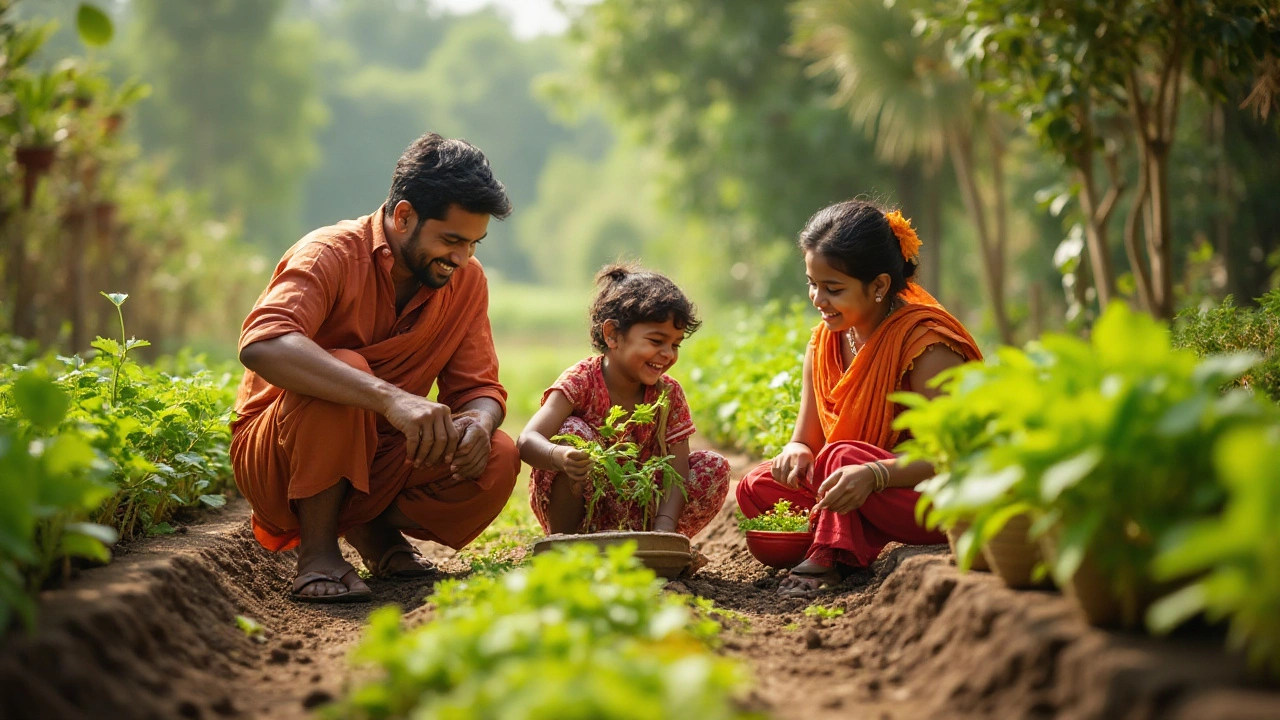
Considering Water Access
When planning your kitchen garden, assessing water access is a vital consideration that can make or break the health of your plants. It is essential to ensure water is conveniently accessible to your plot, and there are several factors to keep in mind. Firstly, consider the proximity to your home’s water source. The closer your garden is, the easier it will be to water your garden efficiently, which can be particularly important during dry spells or peak summer months. Transporting water from a far-off point can be tiresome and reduce the enthusiasm for regular watering.
An efficient irrigation system can save you time and ensure your home garden receives ample and consistent hydration. Many gardeners opt for drip irrigation systems, which deliver water directly to the root zone of plants, reducing evaporation and water waste. Alternatively, sprinkler systems can cover larger areas, but might not be as precise. To make a well-informed decision, assess the water needs of your specific plants and consider the climate in your location.
Gardening tips suggest collecting rainwater as an eco-friendly solution. Setting up rain barrels under downspouts can provide a sustainable water source. This approach not only helps conserve water but also provides chemical-free hydration. According to a study by the Auckland Council, an average house’s roof collects over 20,000 liters of rainwater annually, which can significantly aid in maintaining a lush garden.
"Efficient use of water resources is not just environmentally sound, but essential for thriving gardens," says Jane Smith, a respected horticulturist with over 15 years of experience.
Last but not least, think about drainage. Poor drainage can lead to waterlogged roots and poor plant health. Raised beds or pots with appropriate drainage holes can be excellent on patios or areas with heavy soil. A simple trick to determine soil drainage quality is to dig a hole about 12 inches deep and fill it with water. If the water hasn’t completely drained within 12 hours, soil amendments like sand or compost may be necessary to improve permeability. Understanding water access and management will help your kitchen garden flourish while keeping you in tune with your environment’s natural resources.
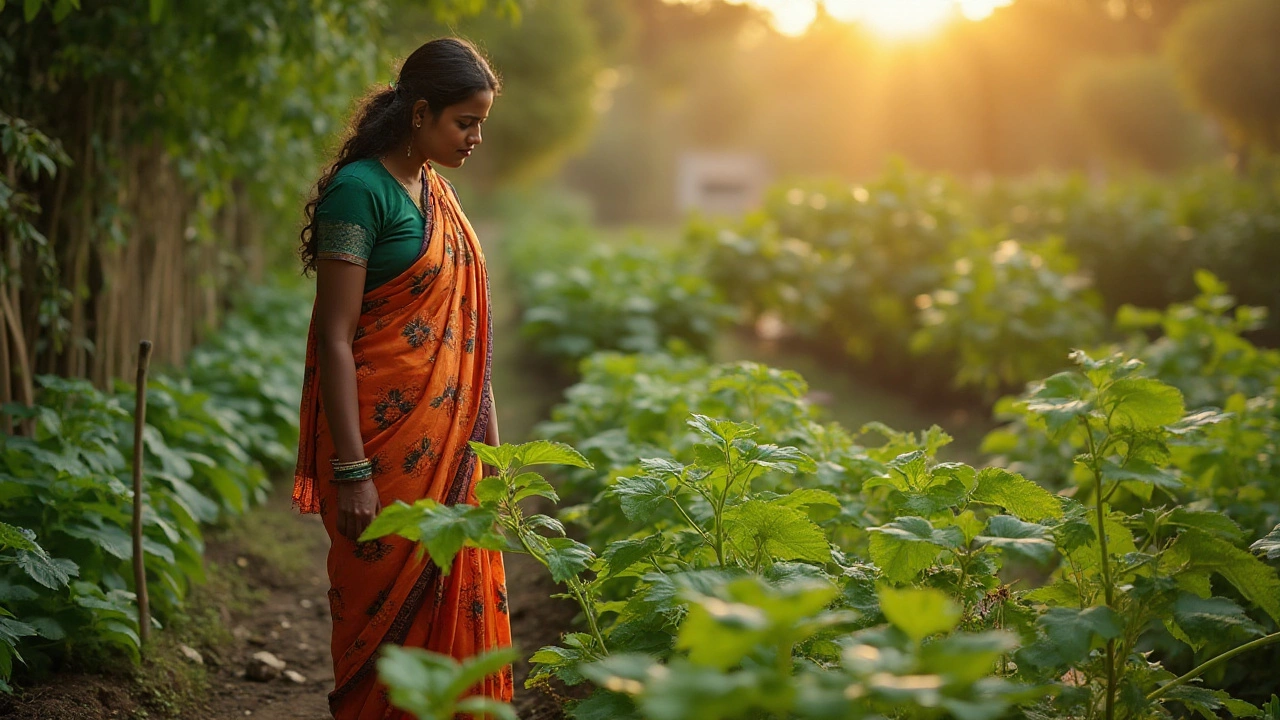
Design and Accessibility
Designing your kitchen garden involves an interesting blend of creativity, practicality, and understanding of nature's demands. When considering accessibility, think about how often you'll need to reach your garden, both for daily care and during harvest time. Many seasoned gardeners recommend positioning the garden close to your kitchen door or a main pathway to make it easier to tend to and ensure you’re encouraged to use your fresh produce frequently. Such proximity can make all the difference, especially if you're whipping up a meal and realize you've just run out of herbs like basil or thyme.
Moreover, consider how different design layouts can affect accessibility. Raised beds are a popular choice due to their ability to provide better drainage, reduce strain on your back, and allow efficient use of space. They also warm up more quickly in the spring, giving you a head start on planting. If you're dealing with limited ground space, vertical gardening solutions, such as wall-mounted planters, can be both space-saving and visually appealing. These are particularly advantageous for urban settings or any area where ground-level planting space is scarce.
In terms of design layout, zone planting based on a plant's sunlight and watering needs can be illuminatingly fruitful. Gardening experts at the Royal Horticultural Society suggest separating plants based on these needs to enhance growth and health. Imagine a garden where the sun-thirsty tomatoes flourish in direct sunlight, while leafy greens indulge in partial shade, reflecting an orchestrated symphony thanks to keen planning.
"A well-planned garden not only feeds the body but also enlivens the mind and soul." — Sarah Owens, horticulturist
Another important aspect of accessibility is your pathway design. Create clear, broad paths that allow easy access for maintenance tools like wheelbarrows and hoses. Using materials like gravel or stepping stones can delineate these areas effectively, ensuring they're distinct from plant beds and minimizing soil compaction. Plus, they add character and harmonize with the natural aesthetics of your garden.
Considering all users of the garden is crucial too. Designing with inclusivity in mind — think of older adults, children, or those with mobility challenges — can lead to features like wider paths, gentle slopes instead of stairs, and perhaps even some seating areas for rest and reflection. This thoughtful approach ensures everyone can enjoy the fruits of your labor, quite literally!
